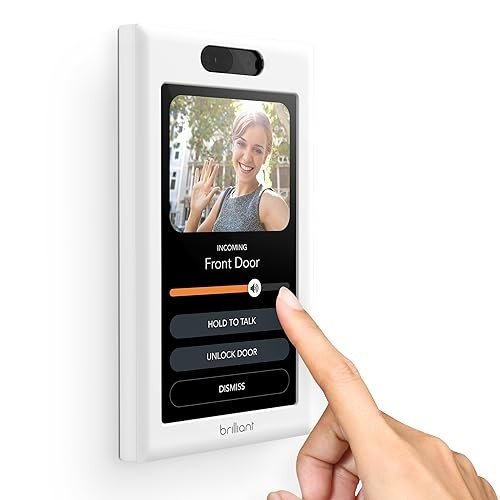Shop Lighting UK: Illuminating the Retail Experience
In the ever-evolving world of retail, the value of shop lighting can not be overemphasized. It not just enhances the aesthetic appeal of items but likewise influences client behavior, their mood, and the general shopping environment. With developments in technology and design, shop owners in the UK have a myriad of alternatives to pick from when it emerges services. Check This Out will check out the types of lighting readily available, their advantages, and factors to consider for producing the perfect ambiance in a retail area.
Importance of Proper Shop Lighting
Reliable shop lighting plays an essential function in customer experience and can considerably impact sales. Here are some crucial reasons appropriate lighting is vital for retail environments:
- Highlighting Products: Good lighting draws attention to products, making them more enticing to customers.
- Creating Atmosphere: The best lighting can set the mood and evoke feelings, affecting getting choices.
- Enhancing Safety: Well-lit stores are more secure, assisting customers navigate without danger of tripping or mishaps.
- Improving Visual Merchandising: Proper lighting can improve display screens, making them dynamic and appealing.
Types of Shop Lighting
Shop owners can pick from various types of lighting, each serving different purposes, including ambient, job, accent, and decorative lighting. Here's a breakdown of each type:
| Type of Lighting | Description | Finest Uses |
|---|---|---|
| Ambient Lighting | Provides total illumination to the space. | General retail locations like stores and supermarkets. |
| Job Lighting | Concentrate on specific locations to enhance exposure for jobs. | Checkout counters and fitting rooms. |
| Accent Lighting | Emphasizes specific products or screens, developing a focal point. | Display cases, art, or marketing products. |
| Decorative Lighting | Adds aesthetic appeal and boosts the total design. | Chandeliers and special fixtures in high-end stores. |
1. Ambient Lighting
Ambient lighting is the fundamental illumination within a shop. It fills the whole area, guaranteeing that clients can see and navigate easily. Merchants must think about using LED panels or ceiling-mounted fixtures, as they use energy efficiency and excellent light circulation.
2. Job Lighting
Job lighting is important for locations where particular activities take place, such as checkout counters or workstations. Shop owners can set up under-cabinet lighting or track lights to focus lighting on these areas, enhancing the benefit and experience for both personnel and consumers.
3. Accent Lighting
Accent lighting helps accentuate specific products or functions within the store. This type of lighting can be accomplished through spotlights, track lights, or tactically positioned wall-mounted fixtures. It is particularly effective for showcasing featured products, advertising displays, or art work, directing customer focus where it's most needed.
4. Decorative Lighting
Beyond performance, decorative lighting elements include style and character to a retail area. Distinct fixtures, such as pendant lights or large chandeliers, can produce an unforgettable environment, especially in boutiques or high-end merchants. These declaration pieces not only brighten but also improve the shop's branding and aesthetic appeal.
Selecting the Right Lighting for Your Shop
When choosing lighting for a retail environment, shop owners must think about the following factors:
- Store Type: Different kinds of retail need differing lighting solutions. A fashion jewelry store may need softer, more concentrated lights, while a grocery store may require brighter ambient lighting.
- Color Temperature: The color of light can affect the understanding of items. Warm lights (under 3000K) create a cozy feel, while cool lights (above 3000K) can make a space feel more contemporary.
- Energy Efficiency: The usage of LED lighting not only conserves energy but likewise decreases costs with time.
- Flexibility: Install dimmers or adjustable fixtures to adapt lighting for various celebrations or seasonal changes.
The Future of Shop Lighting
As technology advances, shop lighting is becoming progressively sophisticated. Here are some trends forming the future of retail lighting in the UK:
- Smart Lighting Solutions: Integrated innovation permits for remote control and automation of lighting systems via mobile phones or home assistants.
- Sustainable Lighting: There is a growing emphasis on eco-friendly options, with merchants choosing for products that minimize ecological effect.
- Centerpiece Lighting: Retailers are significantly using lighting to create particular focal points that assist client traffic and improve item display screens.
Frequently Asked Questions about Shop Lighting in the UK
Q: What is the very best kind of lighting for a clothing store?A: A mix of
ambient and accent lighting is usually best. Ambient lighting is required for overall exposure, while accent lighting can assist highlight crucial pieces or collections. Q: How can I make my shop lighting more energy-efficient? A: Consider using LED lights, setting up movement sensing units, or incorporating
dimmers. This reduces energy intake and costs in the long run. Q: Should I use natural light in my shop?A: Yes, using natural light can improve customer experience whilelowering energy expenses. However, it is very important to stabilize natural light with synthetic lighting, particularly on cloudy days. Q: How frequently ought to I replace my shop's lighting fixtures?A: This depends on the type of fixtures utilized. LED lights can last as much as 25,000 hours, while traditional bulbs
might need to be replaced more often. Routine upkeep checks are advised. In an increasingly competitive retail environment, shop lighting plays an invaluable function in forming client experiences and driving sales. Retailers in the UK have a broad array of alternatives and innovations at their disposal to develop the perfect atmosphere. By understanding the value of the different types of lighting and how to implement them effectively, shop owners can improve their area, making shopping more enjoyable for customers while increasing their bottom line.

